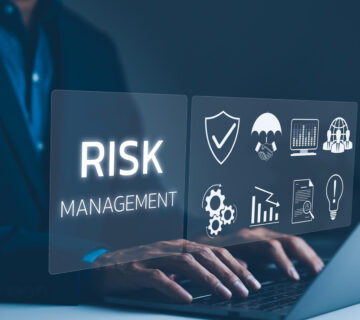
Industry 4.0: Driving Smart Manufacturing and Digital Transformation
Table of Contents
ToggleThe global manufacturing sector is undergoing a radical shift driven by Industry 4.0, often referred to as the Fourth Industrial Revolution. This transformation integrates advanced manufacturing technologies, Industrial IoT, and Artificial Intelligence in Manufacturing to create Smart Factories that are more efficient, connected, and resilient.
What is Industry 4.0?
Industry 4.0 is the convergence of digital transformation and industrial production. Unlike traditional manufacturing, where machines operate in isolation, modern systems are interconnected through the IoT in Manufacturing, enabling real-time data sharing, predictive maintenance, and adaptive production processes.
Smart Manufacturing and Innovation
Smart Manufacturing leverages data, automation, and AI to optimize operations. From additive manufacturing (3D printing) that enables on-demand production, to robotics and advanced analytics, these innovations empower companies to reduce waste, increase customization, and respond quickly to market demands.
Industry 4.0 Benefits
The benefits of Industry 4.0 are extensive:
Efficiency Gains – Automated processes minimize downtime and reduce costs.
Flexibility – Smart systems can adapt to changing product designs or supply chain disruptions.
Enhanced Quality – Real-time monitoring ensures higher accuracy and fewer defects.
Sustainability – Optimized energy use and reduced material waste support greener manufacturing.
Industry 4.0 Challenges
Despite its advantages, the path to adoption is not without obstacles. Key Industry 4.0 challenges include:
High Implementation Costs – Upgrading infrastructure demands significant investment.
Workforce Transformation – Employees must learn to work alongside AI-driven systems.
Cybersecurity in Industry 4.0 – Increased connectivity exposes factories to potential cyberattacks, making data protection and secure communication critical.
Integration Complexity – Legacy systems often struggle to connect with modern digital platforms.
The Nine Technology Pillars of Industry 4.0
We at Trax see Industry 4.0 as more than just a buzzword. It’s a strategic framework that connects the physical and digital worlds to make operations smarter, faster, and more independent. Industry 4.0 is built on nine core technology pillars that make businesses and supply chains ready for the future. Some of these tools are already used by a lot of businesses, but the real power of Industry 4.0 comes out when they all work together without any problems.
1. Big Data and AI Analytics
In Industry 4.0, Big Data is collected from all parts of the business, including machines, IoT devices, logistics networks, and even things like customer reviews or weather apps from outside the business. This data becomes useful intelligence when you use AI-powered analytics. Companies can use raw data to get a competitive edge by predicting when equipment will break down, changing production on the fly, and making the supply chain more visible.
2. Horizontal and Vertical Integration
Smart manufacturing needs to be integrated at every level. This means connecting processes across production floors, facilities, and supply chains in a horizontal way. It connects business processes like R&D, quality control, sales, and finance with shop-floor operations. The result: smooth data flow, fewer silos, and faster decision-making.
3. Cloud Computing
Industry 4.0 wouldn’t be possible without the cloud. Cloud computing makes it easier for AI, machine learning, and IoT to work together by centralizing data and giving you scalable infrastructure. Cyber-physical systems use the cloud to coordinate production activities in real time, which allows for large-scale innovation and flexibility.
4. Augmented Reality (AR)
Augmented Reality (AR) overlays digital information on physical environments, giving frontline workers real-time access to instructions, IoT data, and training modules. From maintenance technicians using AR glasses to visualize repair steps, to quality inspectors verifying digital twins against physical products, AR strengthens accuracy, efficiency, and workforce safety.
5. Industrial Internet of Things (IIoT)
The Industrial IoT (IIoT) connects machines, robots, and products through sensors and RFID tags. This connectivity provides real-time data on performance, location, and condition—helping businesses optimize production, prevent downtime, and track products across global supply chains. In many ways, IIoT is the nervous system of Industry 4.0.
6. Additive Manufacturing (3D Printing)
Once limited to prototyping, additive manufacturing is now reshaping production itself. By storing designs digitally and printing parts on demand, businesses reduce inventory costs and enable localized manufacturing. Advanced materials—from metals to biomaterials—are opening doors to new industries, from aerospace to healthcare.
7. Autonomous Robots
The next generation of autonomous robots goes beyond repetitive tasks. Equipped with AI, machine vision, and advanced sensors, these robots can adapt to their environment and make decisions independently. Whether it’s drones scanning inventory or mobile robots handling pick-and-place operations, autonomous robotics enhance productivity while minimizing human risk.
8. Simulation and Digital Twins
A digital twin is a virtual replica of a machine, system, or process that continuously updates using IIoT data. This technology allows companies to test scenarios, predict maintenance needs, and optimize performance without disrupting live operations. In smart factories, digital twins are critical for maximizing uptime and reducing costs.
9. Cybersecurity
As connectivity expands, so does vulnerability. Cybersecurity in Industry 4.0 requires advanced defenses—Zero Trust architectures, AI-driven threat detection, and even blockchain—to secure networks and protect intellectual property. Cyber resilience is not optional; it’s the backbone of trust in digital manufacturing.
Bringing It All Together
The nine technology pillars of Industry 4.0 are not standalone solutions—they are interconnected forces that, when combined, redefine what’s possible in manufacturing and supply chain management. At Trax, we see these technologies not just as enablers of efficiency, but as catalysts for business innovation, workforce transformation, and competitive advantage.
Manufacturing 4.0 Solutions in Action
The digital transformation of Industry 4.0 is more than a technological shift—it’s a cultural and operational evolution. By unifying people, data, and assets, manufacturers and supply chains unlock an almost limitless range of optimization opportunities. Below are real-world examples of how Manufacturing 4.0 solutions are driving efficiency, visibility, and sustainability.
1. Collaborative Design Platforms
Challenge: Traditional product development often happens in silos, slowing innovation and limiting visibility.
Solution: Industry 4.0 enables collaborative design platforms where R&D teams, designers, engineers, and business stakeholders share real-time data and insights. This cross-functional model accelerates innovation, supports knowledge exchange, and delivers customer-centric products faster.
2. Predictive Maintenance
Challenge: Reactive maintenance leads to unexpected downtime and high repair costs.
Solution: With IoT sensors and predictive analytics, businesses monitor equipment health in real time. Predictive algorithms identify issues before they escalate, reducing downtime by up to 50% and extending asset life by as much as 40%.
3. Supply Chain Optimization
Challenge: Global supply chains face constant pressure from disruptions, cost fluctuations, and demand variability.
Solution: Industry 4.0 creates end-to-end visibility across the supply chain. Real-time data from suppliers, production schedules, and customer demand enables better logistics, demand forecasting, and fulfillment accuracy—resulting in lower costs and greater resilience.
4. Agile Manufacturing
Challenge: Consumer demands shift faster than traditional product cycles can accommodate.
Solution: Using AI and advanced analytics, businesses gather real-time customer insights from social platforms, reviews, and service interactions. This feedback informs product design and R&D, enabling agile development that aligns closely with consumer preferences, builds loyalty, and accelerates innovation.
5. Quality Control and Defect Detection
Challenge: Manual inspections can miss defects and slow production.
Solution: IoT-enabled sensors and machine learning algorithms provide continuous monitoring of production lines. Anomalies are flagged instantly, enabling rapid corrective actions and consistently high-quality output.
6. Circular Economy Practices
Challenge: Traditional manufacturing models produce waste and strain resources.
Solution: Industry 4.0 supports a circular economy approach, maximizing reuse, refurbishment, and recycling. With Big Data and IoT tracking, companies monitor product lifecycles, streamline reverse logistics, and recover valuable resources. AI-powered design tools also help teams create products that are easier to recycle, repurpose, and sustain long-term.
7. Carbon Footprint Monitoring and Optimization
Challenge: Meeting ambitious sustainability goals requires accurate, actionable data.
Solution: Industry 4.0 technologies measure real-time emissions data across energy use, transportation, and operations. This empowers organizations to pinpoint inefficiencies, implement energy-saving strategies, and reduce their overall carbon footprint—aligning operations with ESG commitments and regulatory requirements.
The Bigger Picture
These Manufacturing 4.0 solutions illustrate the transformative power of Industry 4.0 when people, processes, and technology are aligned. From predictive maintenance to circular economy practices, these innovations enable organizations to operate smarter, leaner, and more sustainably—turning digital transformation into measurable business outcomes.
Industry 4.0 Benefits — Summarized
It’s not just a tech upgrade; Industry 4.0 is a whole new way of doing business. Organizations create a clear, connected system that spans the entire value chain by breaking down barriers and connecting people, processes, and operations.
Main Benefits:
Efficiency in Operations
Better use of resources, less downtime, and automated workflows all lead to higher productivity. This efficiency also helps with sustainability by using advanced analytics to find the best ways to use energy, cut down on waste, and make products that are better for the environment over their entire life cycle.Making decisions based on data
Real-time data collection and AI-powered analytics turn raw data into useful information. Leaders feel more sure of themselves when they make decisions more quickly and accurately, and they can also meet changing customer needs with custom, on-demand solutions.Innovation that focuses on the customer
Companies can offer personalized products and services by seeing preferences and market trends in real time. This keeps up with changing expectations and builds loyalty.Sustainability and Strength
Businesses can lower their impact on the environment and make their supply chains more stable by incorporating sustainability into their operations and using circular economy practices.Advantage over the competition
Industry 4.0 gives you the flexibility to see changes coming, respond faster than your competitors, and find new ways to grow in today’s rapidly changing markets..
Summary: Benefits of Industry 4.0
Industry 4.0 goes beyond technology upgrades—it transforms how organizations operate by connecting people, processes, and data across the value chain.
Efficiency & Productivity: Smarter resource use, reduced downtime, and automated workflows.
Real-Time Insights: Data-driven decision-making with AI and analytics.
Customer-Centricity: Personalized products and faster response to changing demands.
Sustainability: Optimized energy use, reduced waste, and circular economy practices.
Competitive Edge: Greater agility and resilience in volatile markets.
Frequently Asked Questions about Industry 4.0
Start with a readiness assessment of your operations and IT landscape. Identify where data silos exist, where automation would deliver the most value, and how your teams currently collaborate. From there, prioritize a few pilot projects that can deliver quick wins before scaling across the business.
Yes. Many manufacturers use retrofit solutions like IoT sensors, edge devices, and gateways to digitize older equipment. This allows legacy assets to provide real-time data without requiring full replacement.
Most modern Industry 4.0 technologies are built for seamless integration with ERP systems. In fact, ERP integration is critical—it ensures production, supply chain, and business data flow together for a single source of truth.
That depends on their scalability, interoperability, and cloud-readiness. Legacy systems may need upgrades or middleware to handle real-time data volumes. A hybrid approach (cloud + on-premise) is common in early transformation stages.
It begins with your strategic goals—efficiency, cost reduction, sustainability, or customer experience. Each technology (AI, IIoT, AR, additive manufacturing, etc.) delivers different value. A tailored roadmap aligned with your business model ensures the right fit.
Timelines vary, but many organizations see measurable results within 12–18 months of starting. The key is adopting an incremental approach—scale as you learn, rather than attempting a full overhaul at once.
Yes, but not in a disruptive way. Instead of replacing workers, Industry 4.0 often augments human skills with digital tools. Training focuses on data literacy, working alongside automation, and leveraging new decision-making capabilities.
Other Questions
General questions
By choosing scalable, modular platforms that evolve with your needs. Open architectures and cloud-native solutions ensure flexibility as your business grows and technologies advance.
Industry 4.0 is built for agility. The same data and automation systems that streamline operations can also support new product lines, services, or revenue models—ensuring your investment adapts with you.
Automation shifts—not eliminates—jobs. Routine tasks are handled by machines, while people move into higher-value roles in analytics, oversight, and innovation. In fact, Industry 4.0 often creates new categories of work in areas like AI management, digital twin design, and data-driven product development.




No comment